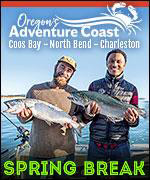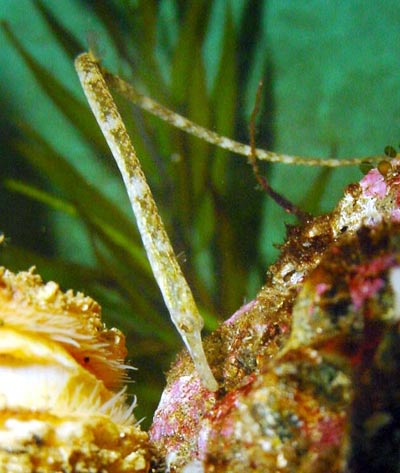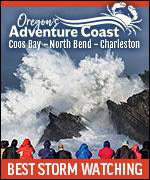Why No Seahorses on Washington / Oregon Coast - The Weird, Related Bay Pipefish
Published 08/28/20 at 6:11 AM PDT - Updated Periodically
By Oregon Coast Beach Connection staff
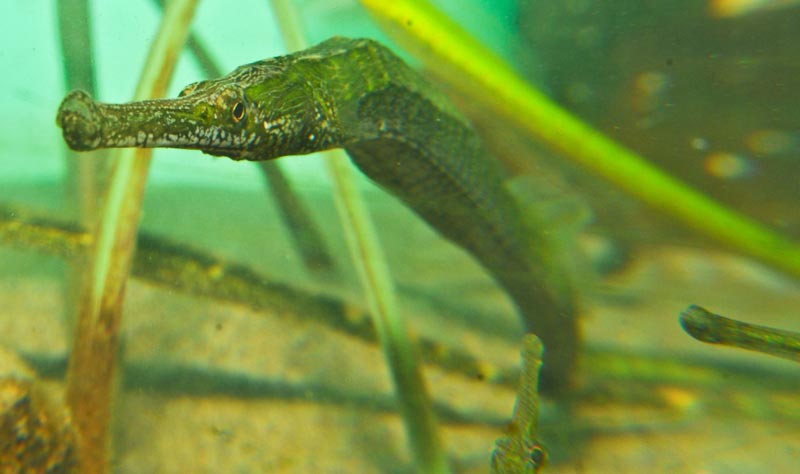
Includes exclusive listings; some specials in winter
In Cannon Beach:
Includes rentals not listed anywhere else
In Manzanita, Wheeler, Rockaway Beach:
Some specials for winter
In Pacific City, Oceanside:
Some specials for winter
In Lincoln City:
Some specials for winter
In Depoe Bay, Gleneden Beach:
Some specials for winter
In Newport:
Look for some specials
In Waldport
Some specials for winter
In Yachats, Florence
Some specials for winter
(Portland, Oregon) – There are sadly no seahorses on the Oregon coast or the Washington coast. Those adorable yet somehow eerie little creatures with their freakishly expression-filled faces and bulbous bodies live in much warmer climates. The Pacific Northwest coast is too cold for them, according to Seaside Aquarium’s Tiffany Boothe. (Photos Seaside Aquarium's Boothe)
Seahorses are legendary for their means of reproduction: the male does the pregnancy thing. It’s surprising to learn that the Oregon / Washington coast region has a relative of it: the bay pipefish (Syngnathus leptorhynchus). Indeed, the bay pipefish is a wild creation of Mother Nature’s, a much stranger, even sci-fi kind of fish that does a host of things you won’t believe.
“Visitors to the aquarium often ask if we have seahorses but since we only display marine life that can be found off the Oregon coast, we direct them to the closest thing we have, bay pipefish,” Boothe said. “Bay pipefish belong to the same family as seahorses (Syngnathidae) and though you can see the resemblance in their face, their bodies are long, thin, and straight.”
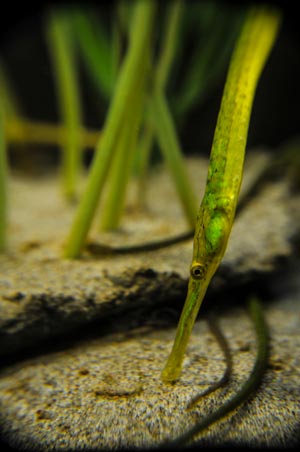 Seriously, forget the seahorse.
Seriously, forget the seahorse.
First, the pipefish is extremely stealthy. Both the Seaside Aquarium and Oregon Coast Aquarium in Newport typically have them, as does the Charleston Marine Science Center on the south coast (availability of these may differ from time to time). The pipefish live among the eelgrass along the coastlines of Mexico all the way up to Alaska, as they do in aquariums here. Their long bodies and color blend in quite well with those watery blades, and it’s there they hide from predators as well as waiting to gobble their own prey – which consists of phytoplankton, crustaceans and other extremely small beasties. They use that long, toothless snout to vacuum in their food.
“Swimming vertically, they blend in with eelgrass so well that it can be difficult to see them, which is why they prefer to inhabit bays and estuaries laden with eelgrass,” Boothe said.
The pipefish does something remarkable and strange when it’s hunting prey, with an underwater action that’s almost akin to that of a hummingbird. It has a transparent fin that oscillates so fast it can’t be seen, something like 20 times a second. Even though they’re bad swimmers in general, this tiny action allows it to maneuver beneath its prey in a precise way and still keep its body motionless, thereby remaining mostly invisible. (Although in fairness the seahorse does something similar.)
At this point it becomes something almost out of a steam punk sci-fi film.
Its head locks into position, a host of muscles start building tension, and then another really weird part: each eye can track independently or it can go into binocular mode like us humans. When everything is just in line, the bay pipefish of the Oregon / Washington coast releases a set of clamps near its skull and the head snaps up insanely fast to start vacuuming in its din-din. It does not use muscles for this part, as those would work too slowly to grab what are otherwise super quick-moving lunch items.
Then, of course, there’s the whole freaky male-giving-birth thing.
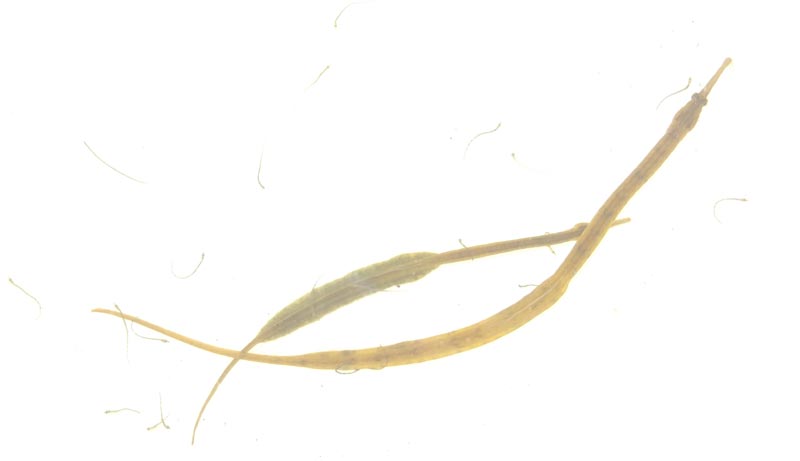
Baby bay pipefish
“Females will pass up to 750 eggs to the males,” Boothe said. “The males will fertilize them and hold them in a specialized pouch located just above their tail. It will take about six weeks (depending on water temperature) for the eggs to hatch. During this time, the male provides nutrients to the eggs via blood supply. Once hatched the miniature pipefish swim off and begin their journey on their own.”
(Other Sources: National Library of Medicine, San Francisco’s Bay Nature Magazine)
Oregon Coast Hotels in this area - Where to eat - Maps - Virtual Tours
Cannon Beach Lodging
Nehalem Bay Lodgings
Manzanita Hotels, Lodging
Three Capes Lodging
Pacific City Hotels, Lodging
Lincoln City Lodging
Depoe Bay Lodging
Newport Lodging
Waldport Lodging
Yachats Lodging
Oregon Coast Vacation Rentals
Oregon Coast Lodging Specials
More About Oregon Coast hotels, lodging.....
More About Oregon Coast Restaurants, Dining.....
LATEST Related Oregon Coast Articles
A curious weather phenomenon that happens more out here
Curb, Road Construction Resumes in Lincoln City as Oregon Coast Season Begins...
Crews return Sept 15 with some dust and small delays. Traffi
NASA Announces First Evidence of Life on Mars in Possible Biosignature
In a former riverbed billions of years old, they found spots with interesting compounds. Astronomy
Portland, Oregon - Beaverton, Oregon Weather and Alerts | Current Conditions,...
Current weather conditions and alerts for Portland and Beaverton
Oregon Coast Scenic Railroad's Fame Engine Turns 100 Years Old with Special Runs
Sept 20 and 21 various special rides. Garibaldi events, Rockaway Beach events, Wheeler events
South Oregon Coast Goes Interstellar: Coos Bay's Sunset Bay Astronomy Fest Se...
Shore Acres State Park gets spacey. Coos Bay events
Swarm of 12 Quakes Fire Off 100 Miles from South Oregon Coast
After the initial 5.8, ranging in magnitude from 2.7 to 5.1: Coos Bay, Port Orford, Bandon, Gold Beach. Geology, weather
SOLVE Cleanup Happens Along Oregon Coast, Inland Sept 20 Through 28
SOLVE is inviting volunteers to take part. Brookings events, Gold Beach events, Port Orford events, Coos Bay events, Bandon events, Florence events, Yachats events, Newport events, Lincoln City events, Rockaway Beach events, Manzanita events, Cannon Beach events, Seaside events, Astoria events
Back to Oregon Coast
Contact Advertise on BeachConnection.net
All Content, unless otherwise attributed, copyright BeachConnection.net Unauthorized use or publication is not permitted














